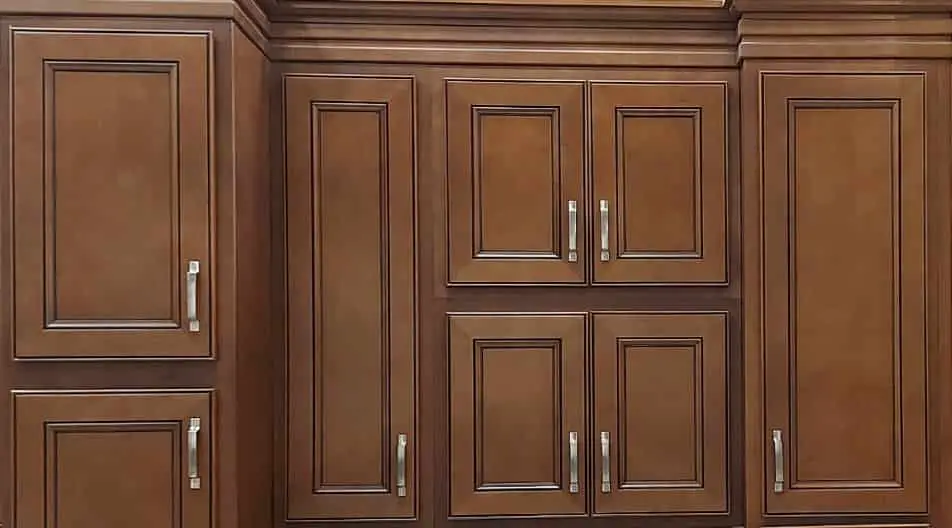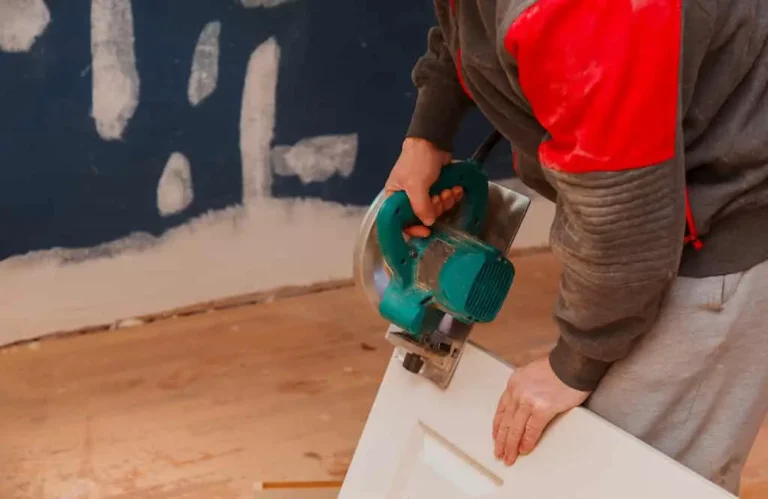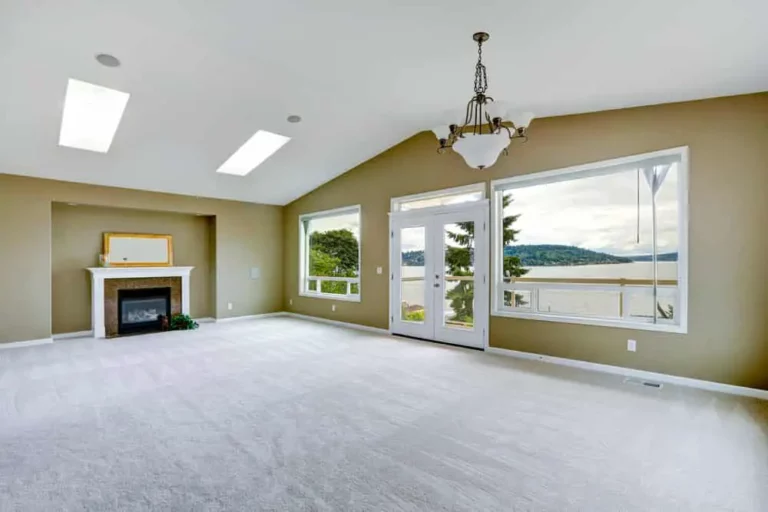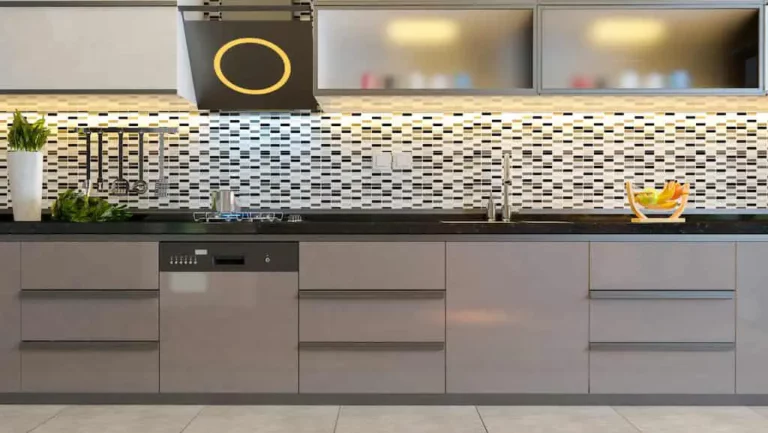Can I Just Replace The Doors On My Kitchen Cabinets?

When a kitchen has been newly installed, it always looks wonderful; however, over time, hard use, the residue from those Saturday morning fry-ups, and general wear and tear begin to take their toll. Instead of gutting the kitchen and installing a completely new one, have you considered replacing the cabinet doors only?
You can just replace the doors on your kitchen cabinets which is a relatively low-cost way of upgrading the kitchen without having to do a complete remodel. New kitchen cabinet doors will change the look and feel and are also a great opportunity to upgrade the hinges and drawer slides.
There are several steps to take when replacing the doors; however, none of these require advanced woodworking skills. Changing the doors in your kitchen cabinets can be done by the average DIY enthusiast.
It Is Possible To Replace The Doors On Kitchen Cabinets
If you are tired of how your kitchen looks, or it needs upgrading after years of use and abuse, a great way to achieve a major visual upgrade is simply changing the doors.
Most modern kitchens consist of an inner cabinet box (carcass,) an outer front(facade), and doors.
A simple change to the doors will result in a dramatic visual upgrade.
Things To Consider When Replacing The Kitchen Cabinet Doors

If you have decided to replace the kitchen cabinet doors, it is important to use the opportunity to check the condition of the underlying structure.
Remove all of the doors and drawer fronts. If you are also replacing the countertops, this is the time to remove them.
Complete the five checks listed below.
One – Check That The Cabinet Boxes (Carcasses) Are Secured
The Cabinet Boxes may be secured to the wall and floor depending on the quality of the original installation.
Jiggle the cabinet boxes to ensure that there is zero movement.
If the cabinet boxes move, drill new holes in discrete locations and secure the carcasses.
Two – Check The Condition Of The Cabinet Boxes(Carcasses)
At the same check the condition of the cabinet Boxes.
In particular, check for wood rot, swelling, mold, bowing, or warping of the sides and floors.
Three – Check All Plumbing Attachments For Leaks
While the units are stripped down, check that all of the plumbing for the sinks, taps, fridges, and dishwashers are still intact and there are no leaks.
Check the visible plumbing for corrosion and the security of all taps and drains.
If there are stains or mold on the walls or units or parts of the cabinets with clear water damage, use this opportunity to fix the system.
Four – Check All Electrical Wiring And Connections
Check that the electrical plugs, switches, and lights (inside the units) are in good order and that there are no exposed copper conductors.
If there are faults in the wiring, have a qualified electrician fix the problem and bring the system back up to code.
Five – Check the Condition Of the Hardware (Is An Upgrade A Possibility?)
Check all of the hinges and drawer slides.
Things to look for include the following.
- None of the door hinges have bent or are broken.
- The attachment points in the carcass are still secure.
- Check that the drawer slides still move easily and smoothly.
- Check that the drawer slide bearings are still in place and that they are still round.
- The drawer slides are still attached securely to the drawers.
A frequent problem is if the drawers have been overloaded with items that are too heavy for the design of the slides. There are two consequences when this happens,
- The slides bend or become detached.
- The bearings (or bearing wheels) lose their shape and prevent the slide from expanding or contracting.
If the hinges or slides are worn, consider replacing them with upgraded hardware. This may include hardware made from more substantial materials.
Consider replacing the drawer slides with soft-touch components. These add a new dimension to the kitchen, and the new doors will change to whole “feel” of the room.
Measure For The Replacement Doors
If you are replacing like-for-like, measure each of the doors you have removed and use those measurements to specify the new components.
If you will install different size doors, follow the procedure listed below.
Measure the vertical and horizontal portions of the cabinet box openings. You must measure each horizontal and vertical side to cater for differences. If the openings are not completely square, this will help you accommodate the differences.
This is one of those times when the saying “measure twice, cut once” is essential.
Measure to the nearest 1/8th inch and write them down in a width X height format.
You can specify three size categories if you intend to use different doors.
- Full Overlay Kitchen Cabinet Doors.
- Partial Overlay Kitchen Cabinet Doors.
- Inset Kitchen Cabinet Doors.
Full Overlay Kitchen Cabinet Doors
A full overlay is when the door is larger than the opening and completely covers the frame of the cabinet box.
Partial Overlay Kitchen Cabinet Doors
Doors sized to partially overlay the cabinet box’s frame are the easiest to install.
Inset Kitchen Cabinet Doors
Inset doors fit inside the cabinet box frame.
While well-fitted Inset doors look great, they are the hardest for the DIY person to measure and install.
If the cabinet box openings are not completely square, this must be considered when measuring the new door. If the measurements are not precise, there will be insight gaps between the door and frame.
Additionally, if you live in a damp or humid climate, the doors will expand and making it difficult to open and close inset doors.
Measure For The Hardware
Measure the precise position of the hinges in the existing door.
Most kitchen door manufacturers can pre-bore the holes for the hinges.
This is a great service; however, your measurements must be exact to line up with the hinge positions on the cabinet box.
Final Thoughts On Measuring Cabinet Doors
Depending on the size category you select, make the necessary adjustments.
- For full Overlay Kitchen Cabinet Doors, add 1 inch to each side of the door (resulting in 2 inches higher and two inches wider (ensure that the door width does not interfere with the cabinets next to it.)
- For partial Overlay Kitchen Cabinet Doors add ½ inch to each side of the door (resulting in 1 inch higher and one inch wider.
- Inset Kitchen Cabinet Doors do not require any adjustment.
If you do not want to replace your door learn more in What Is The Difference Between Refacing And Resurfacing Cabinets?
Choose An Appropriate Material And Door Style
There are several options for the materials to open the new doors.
Solid Wood
Solid wood is the premier material to use for new cabinet doors.
Most cabinet door manufacturers will be able to offer a variety of wood species. The harder the wood, the more durable and long-lasting it is.
Unfortunately, it is also the most expensive option.
Medium Density Fiberboard (MDF)
This commonly used material is thermofoil which is a vinyl laminate that has been heated and pressurized into medium-density fiberboard (MDF)
Artificial MDF is available in a variety of colors and textures. This gives the designer flexibility to accommodate any aesthetic.
The doors are also supplied fully finished and drilled, meaning there is no need to paint or varnish them.
Generally, they will also not need any maintenance other than regular cleaning.
Conclusion
Replacing the kitchen cabinet doors is a way to change the whole look and feel of the workspace. As the doors are the primary visual focus, adding new ones styled differently is an inexpensive way to make you fall in love with the kitchen all over again.
If this is your DYI project read this article What Goes In First Kitchen Cabinets Or Flooring





